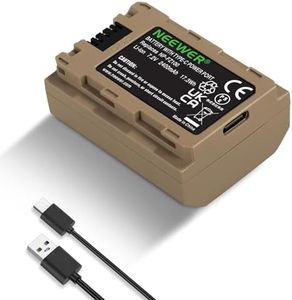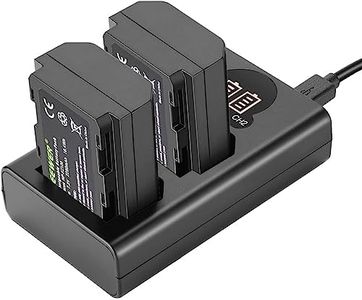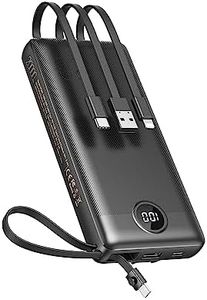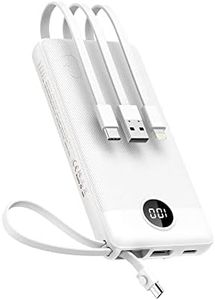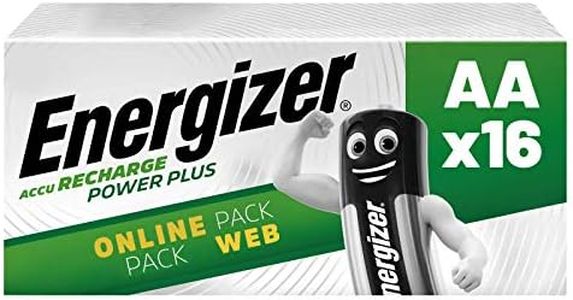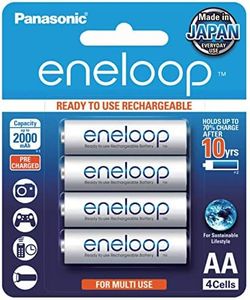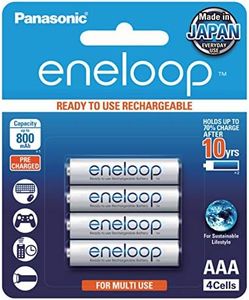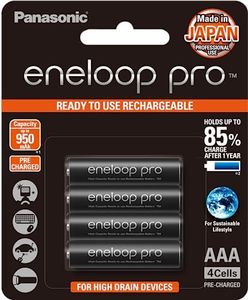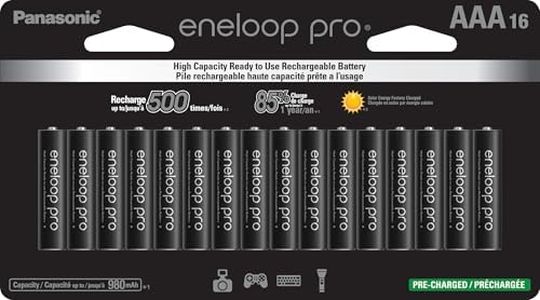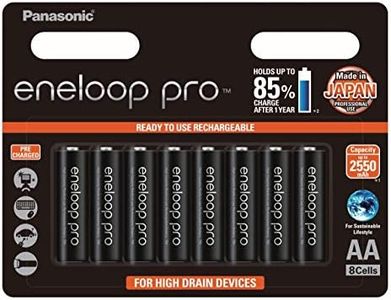We Use CookiesWe use cookies to enhance the security, performance,
functionality and for analytical and promotional activities. By continuing to browse this site you
are agreeing to our privacy policy
10 Best Rechargeable Batteries
From leading brands and best sellers available on the web.Buying Guide for the Best Rechargeable Batteries
Rechargeable batteries are an eco-friendly and cost-effective alternative to single-use batteries, ideal for powering everyday devices such as remote controls, cameras, toys, and even some electronics. When choosing the right rechargeable batteries, it’s important to balance your device’s power needs, how often you use the device, and charging convenience. Paying attention to the main specifications will help you pick batteries that perform well, last longer, and are more suited to your specific gadgets.Battery Type (Chemistry)The most common rechargeable battery types are NiMH (Nickel-Metal Hydride) and Li-ion (Lithium-Ion). NiMH batteries are widely used for everyday household devices, offering good capacity and being simple to recharge with standard chargers. Li-ion batteries are more often found in electronics like cameras and smartphones—they’re lighter, hold a higher charge, and have a low self-discharge rate. When choosing which type to use, match the battery chemistry to your device’s requirements. NiMH is usually best for toys, remotes, or flashlights, while Li-ion works for devices that need more power and longer life between charges.
Capacity (mAh or Ah)Capacity, measured in milliamp hours (mAh) or amp hours (Ah), tells you how much energy the battery can store—higher numbers mean more energy and longer usage between charges. For example, a 2500mAh AA battery will typically last longer than a 1300mAh battery in the same device. High-capacity batteries are perfect if you use your device a lot or if it requires more power, like in digital cameras or game controllers. For devices that don’t need as much power or aren’t used often, lower capacity is usually sufficient and can provide more charge cycles.
VoltageVoltage indicates the electrical power the battery can supply; most AA or AAA NiMH rechargeable batteries are 1.2V, which is slightly less than the 1.5V of single-use alkalines, but most devices handle this just fine. Li-ion batteries vary, often around 3.6V-3.7V. Always make sure the battery voltage matches the recommendations of your device, as using the wrong voltage could result in poor performance or damage. Double-check your device’s specifications before choosing.
Recharge CyclesRecharge cycles indicate how many times the battery can be fully charged and discharged before its performance fades. Some batteries promise 500 cycles, others 1000 or more. If you use your battery-powered devices daily, choosing batteries with higher cycle ratings means they’ll last longer before you need to replace them. For less frequent use, a lower cycle rating may be sufficient.
Self-Discharge RateSelf-discharge is how quickly a battery loses its charge when not in use. Low self-discharge batteries can hold their charge for months or even years while sitting idle—this is important if you use your devices infrequently or want to store spare batteries for emergencies. If you use your batteries regularly, self-discharge is less critical.
Size and CompatibilityRechargeable batteries come in different sizes, such as AA, AAA, C, D, or 9V. It’s important to match the battery size and shape exactly with what your device requires; otherwise, it will not fit or function properly. Printed information on the battery or in your device manual will guide you on what to buy.

